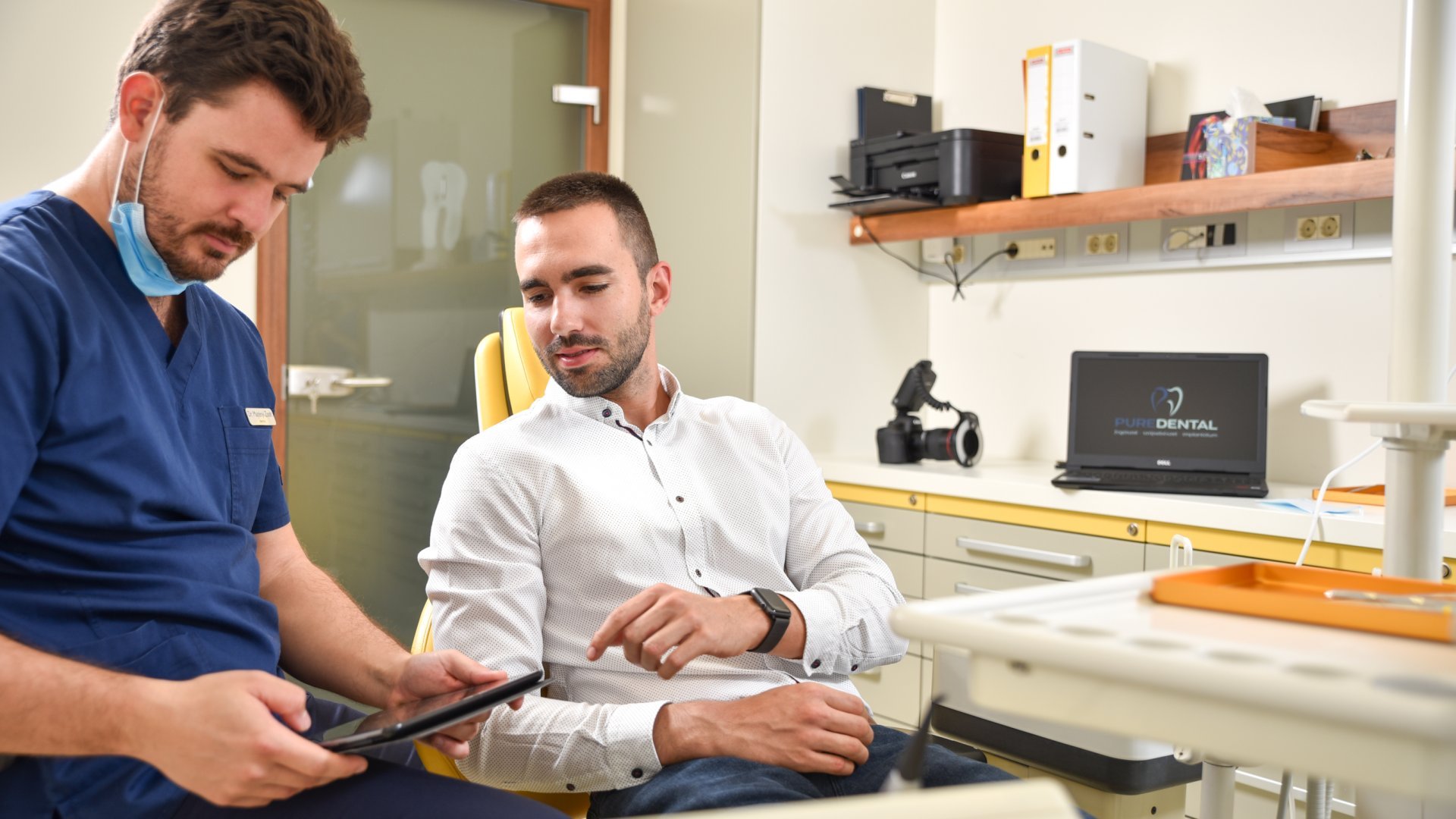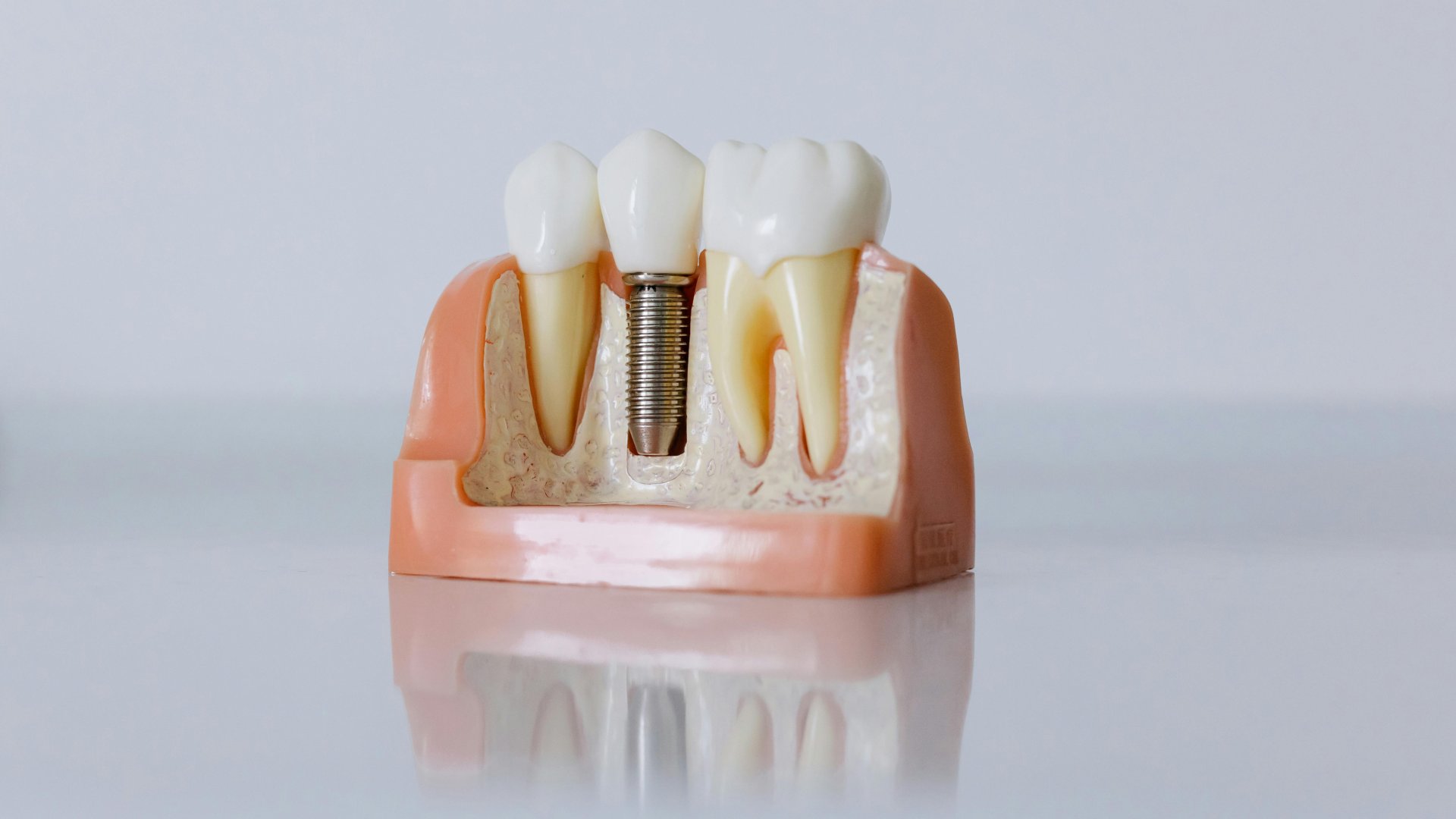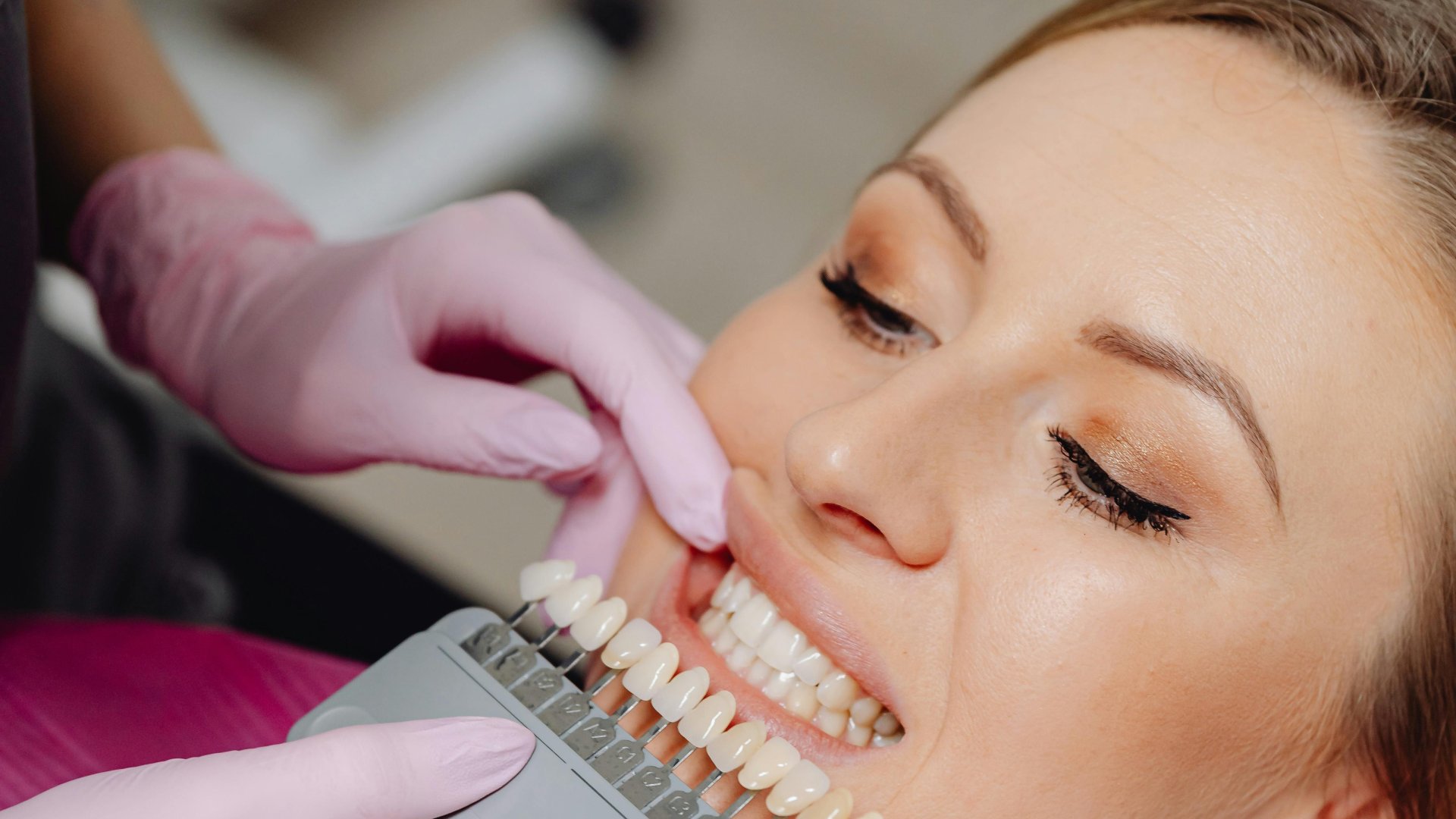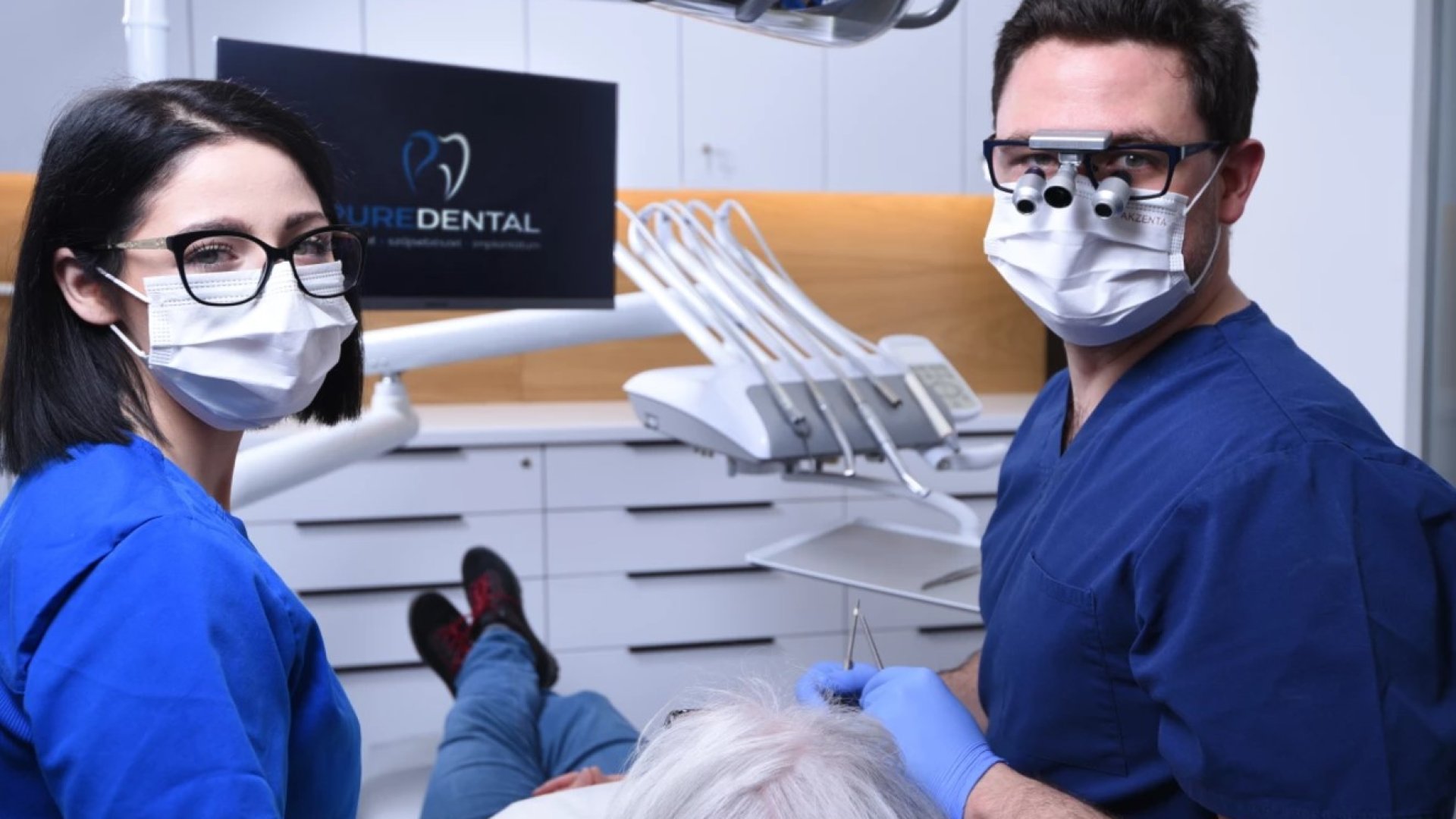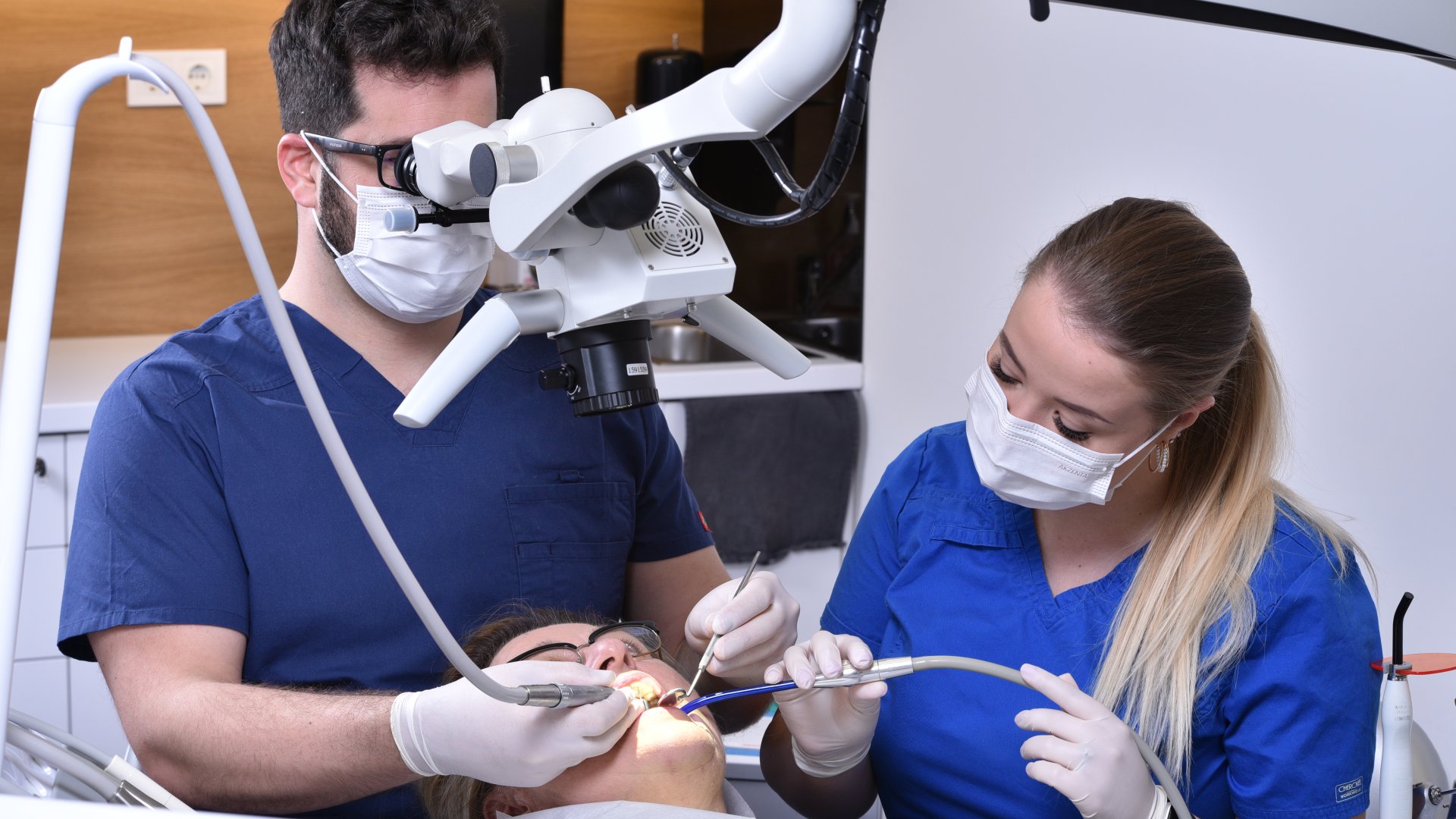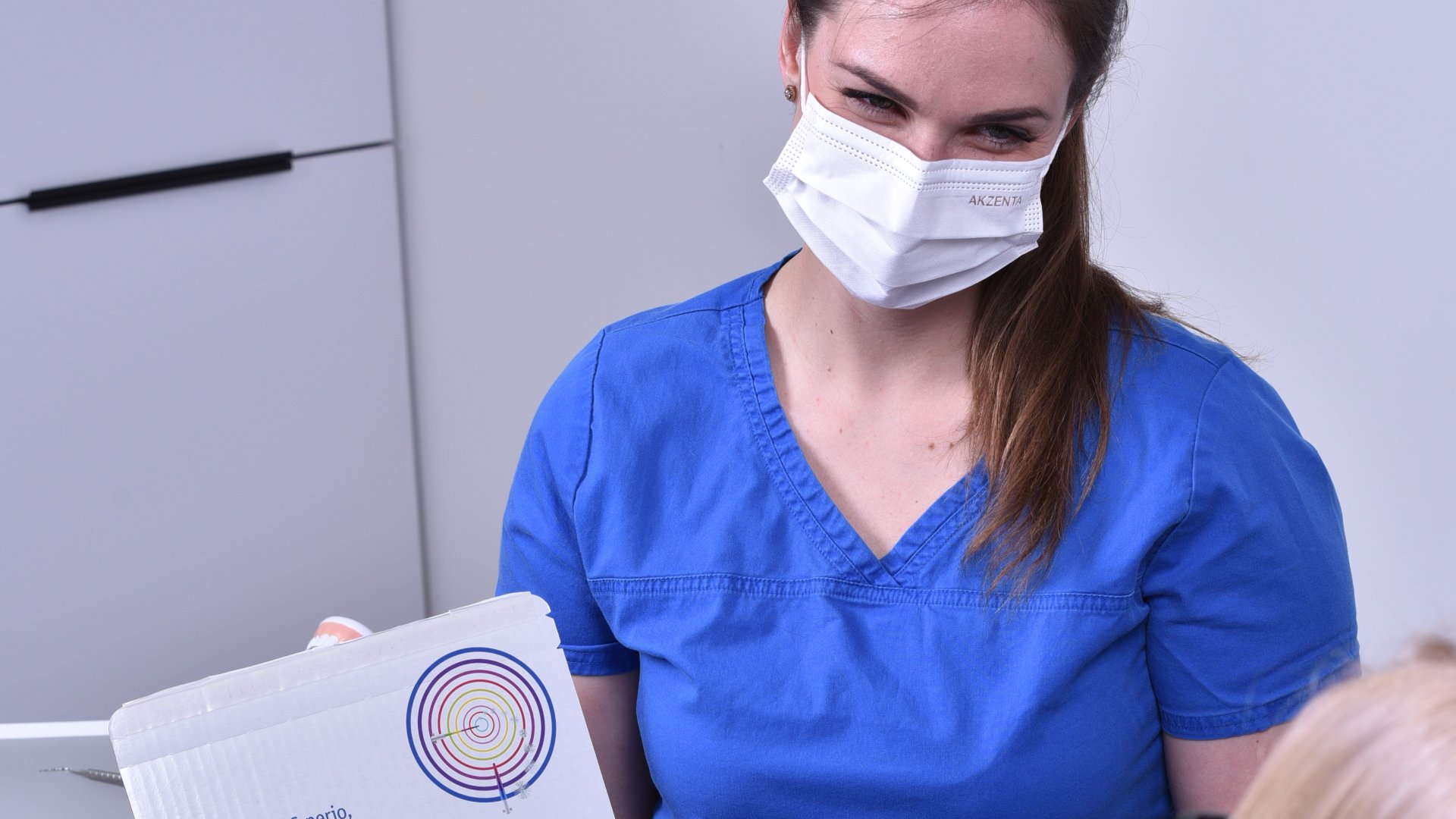Dental consultation
Whatever the procedure, dental treatment is always preceded by a dental consultation. But what exactly does it involve, why is it necessary and what can you expect while it's happening? Our professional article below answers these questions!

What is a dental consultation?
A dental consultation is the very first time the patient and the doctor meet. The patient explains the reason for their visit and, if applicable, which treatments they would like to receive. Many people feel anxious about going to the dentist, this first appointment is also a good opportunity to get to know your doctor, build trust and overcome fear. However, in order to make the best possible treatment plan, you need to assess the condition of your mouth thoroughly to ensure that any problems surface.
What to expect during your first dental consultation?
The dental consultation does not actually involve any actual intervention, it is just an assessment of the condition. We will first perform a diagnostic and physical examination so that our medical colleagues can assess the current condition of your teeth.
If necessary, we will also take panoramic X-rays and photographs to record the situation before treatment.
All of this is necessary to enable us to draw up a treatment plan for you after your dental consultation, which we will of course discuss with you in detail, explaining everything. We will try to outline several options so that you can decide which one is the most suitable for you. At the end of the dental consultation, once the treatment plan has been agreed, we can start making appointments for treatment.
What imaging equipment is used during a dental consultation?
As described above, one part of a dental consultation is imaging of the current condition of the teeth. We have a range of equipment available for this. The most common is the digital panoramic x-ray, which gives us a picture of the patient's entire dentition, so we can see what is causing the problem, whether there is a problem or where the problem is. This scan also gives us a picture of the position of the teeth, the presence of inflammations, cysts, decay, tooth loss and the condition of the sinus.
Digital intraoral X-rays, on the other hand, can only be used for 1 or 2 teeth and are therefore only an additional examination. Another very common imaging tool is the CBCT, a 3D CT scan, which produces a detailed, three-dimensional image and is a great way to assess the condition of the teeth, sinus and surrounding bone. It is indispensable for implant and bone replacement and for teeth left in the jawbone, but more recently it has also been used for gum detection and wisdom tooth removal.
If you have any dental problems or have been to the dentist in the past, you should come to our dental consultation where we can help you assess the condition of your teeth.
Make an appointment now by filling in the form below:

